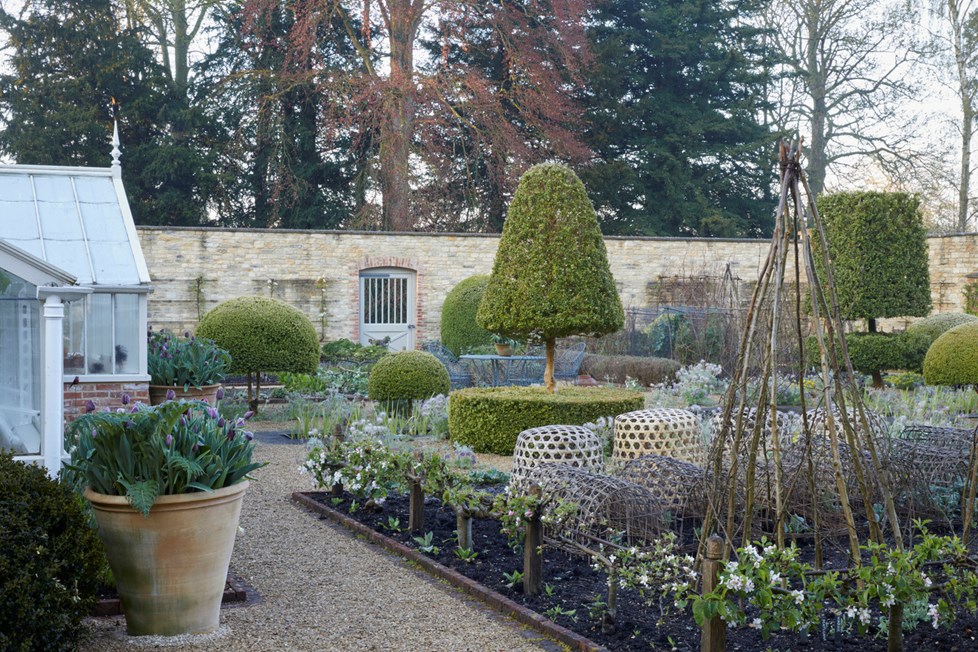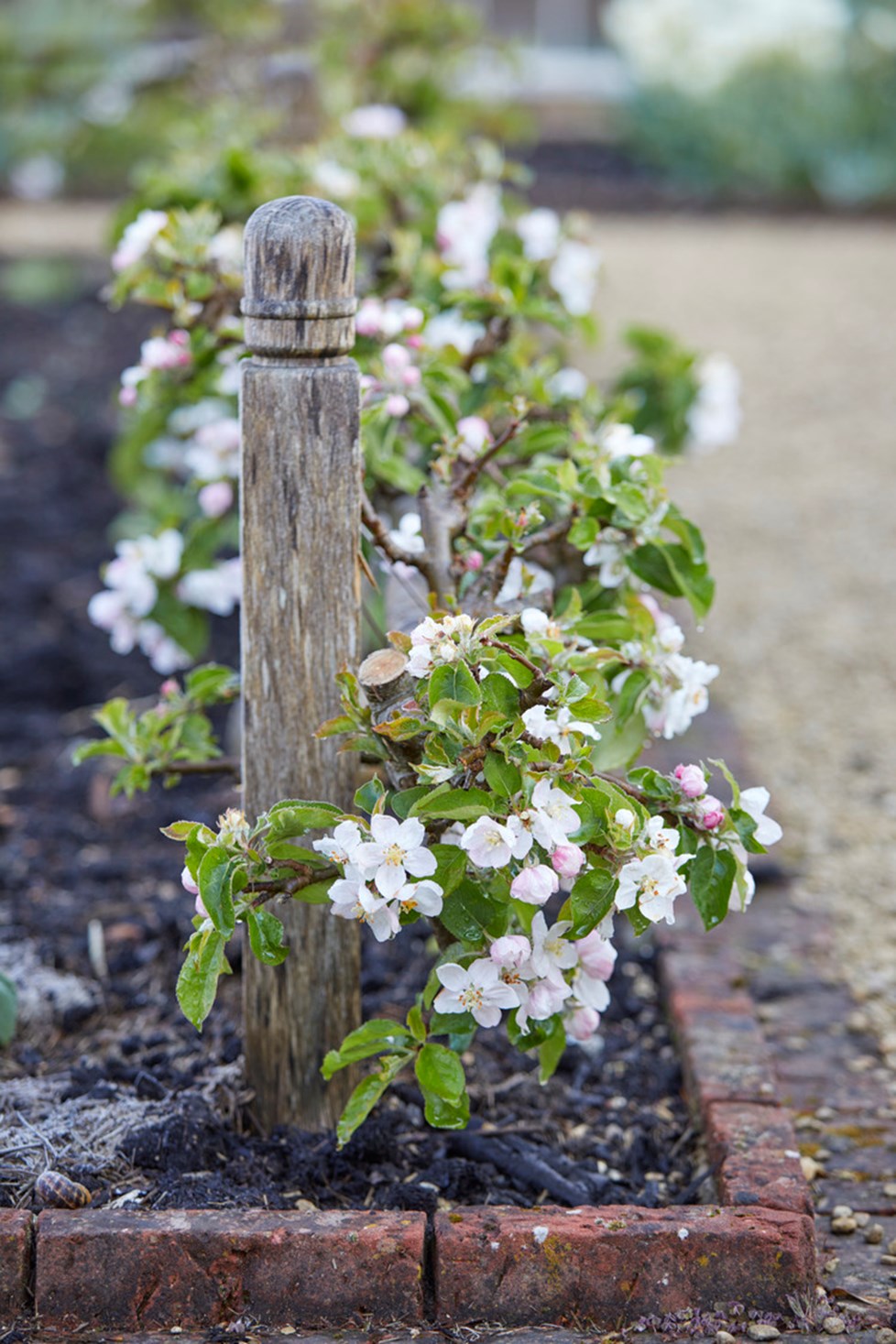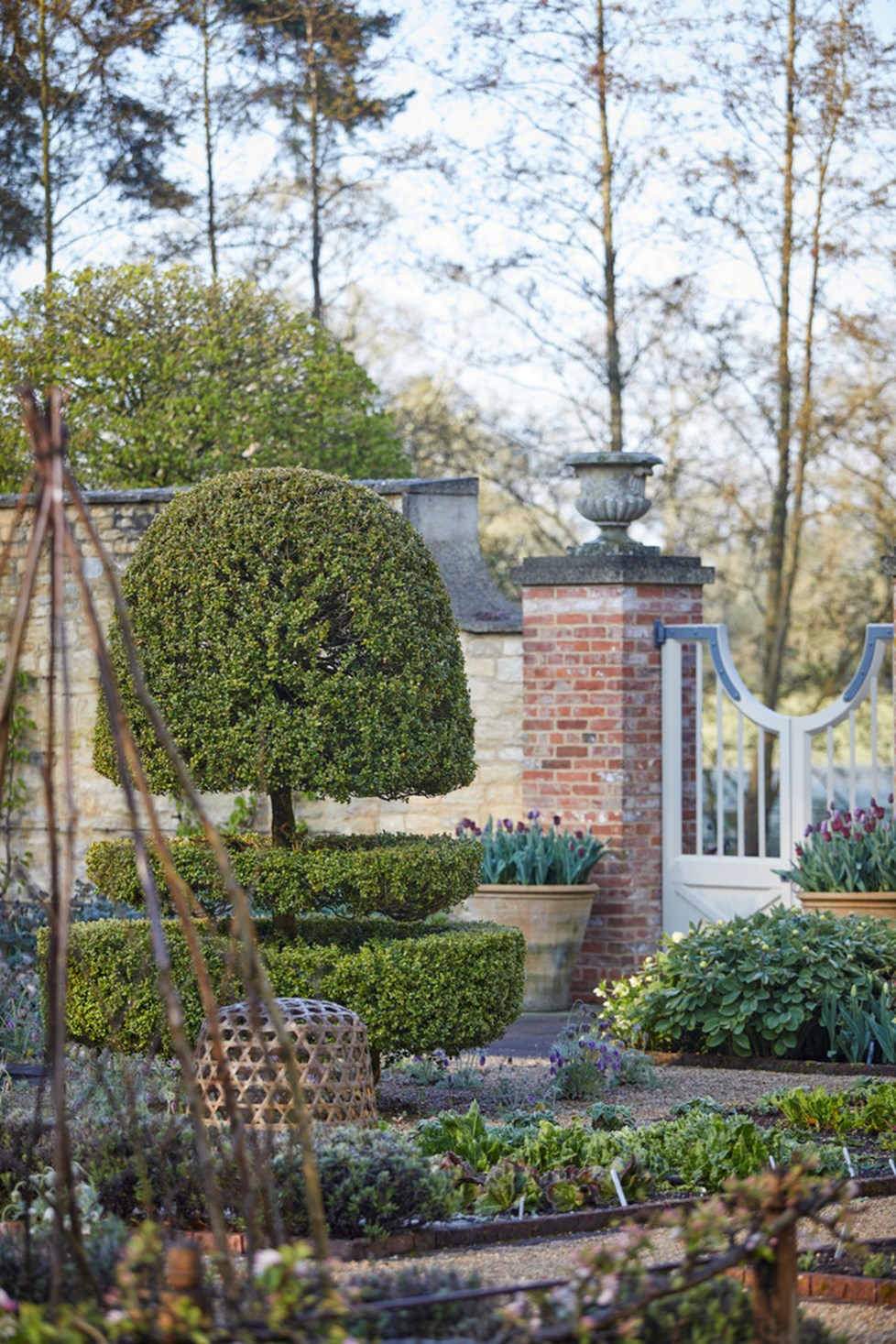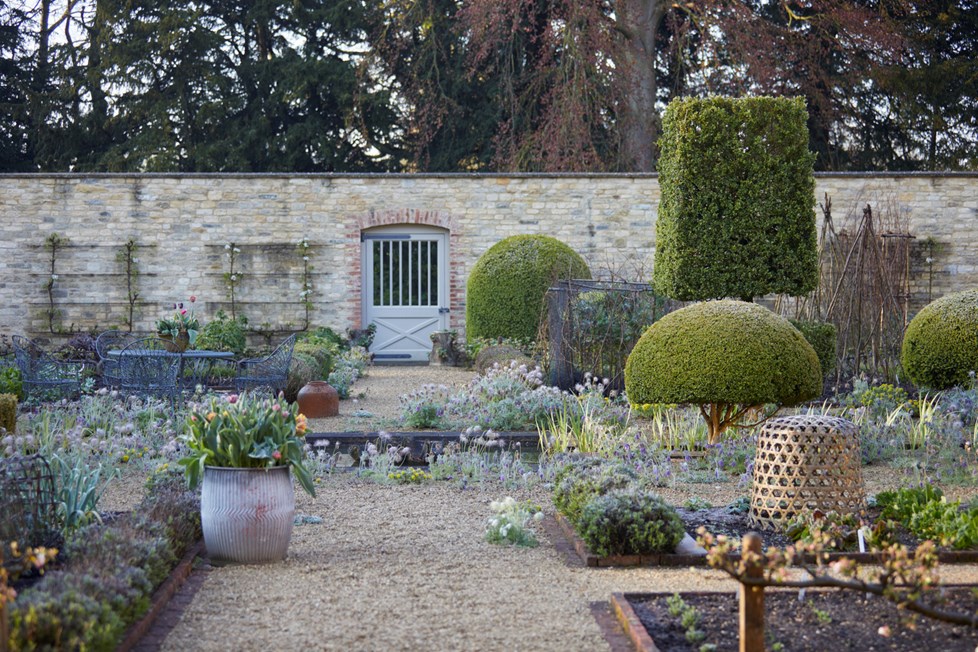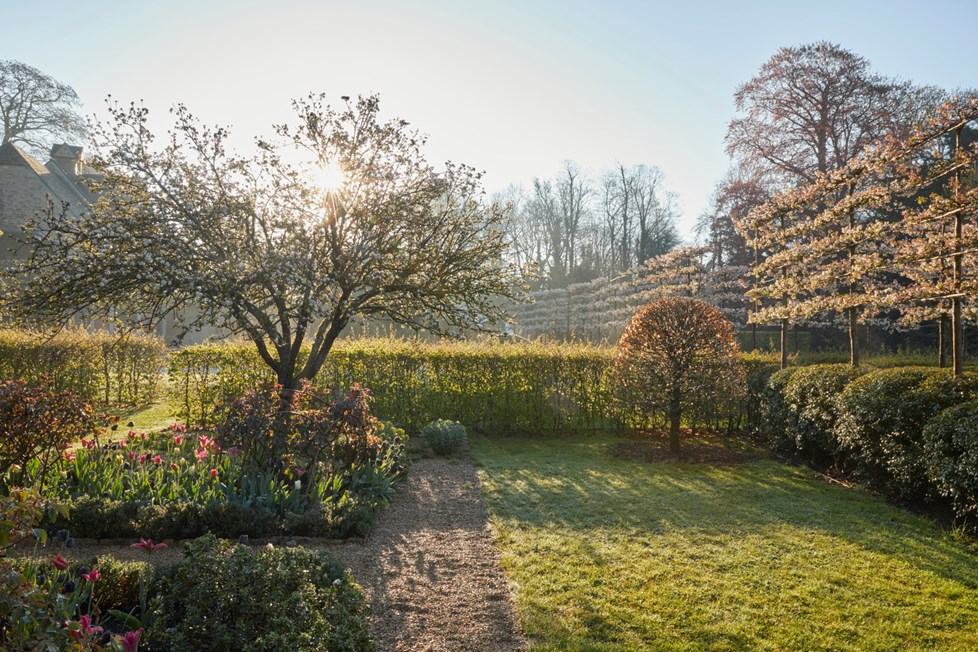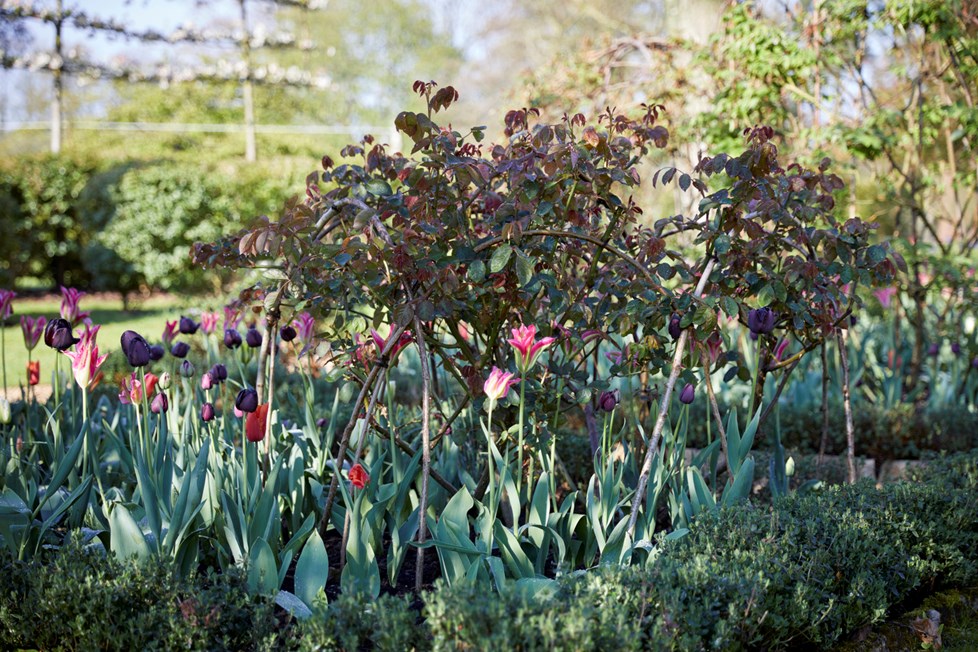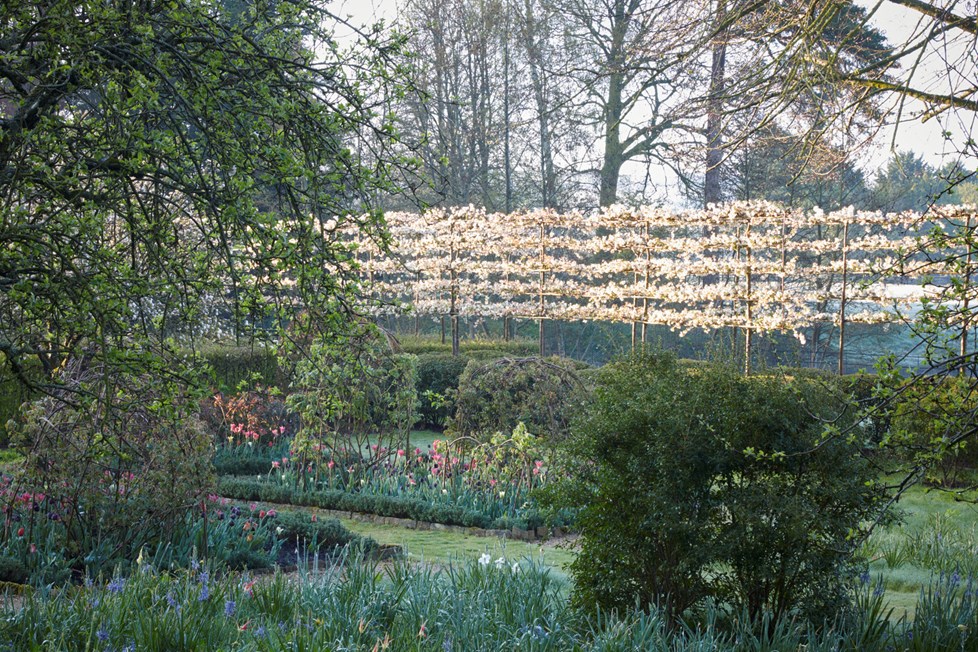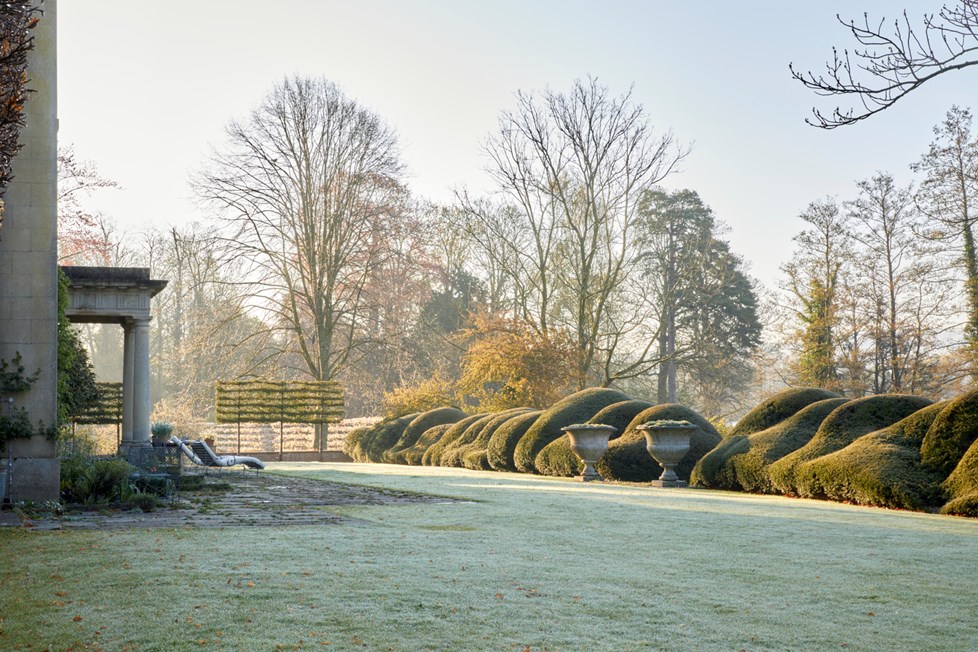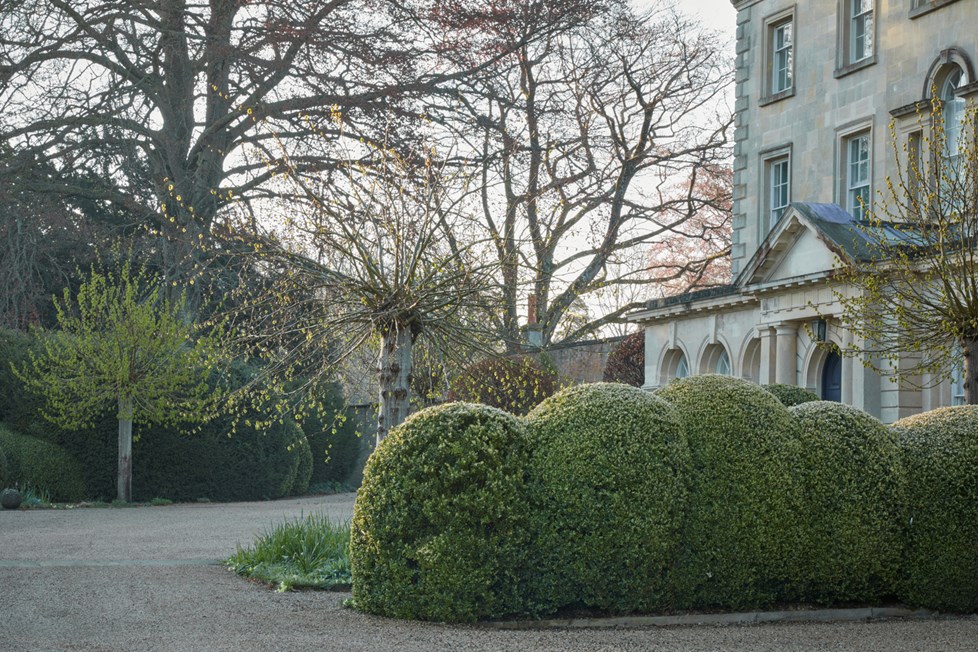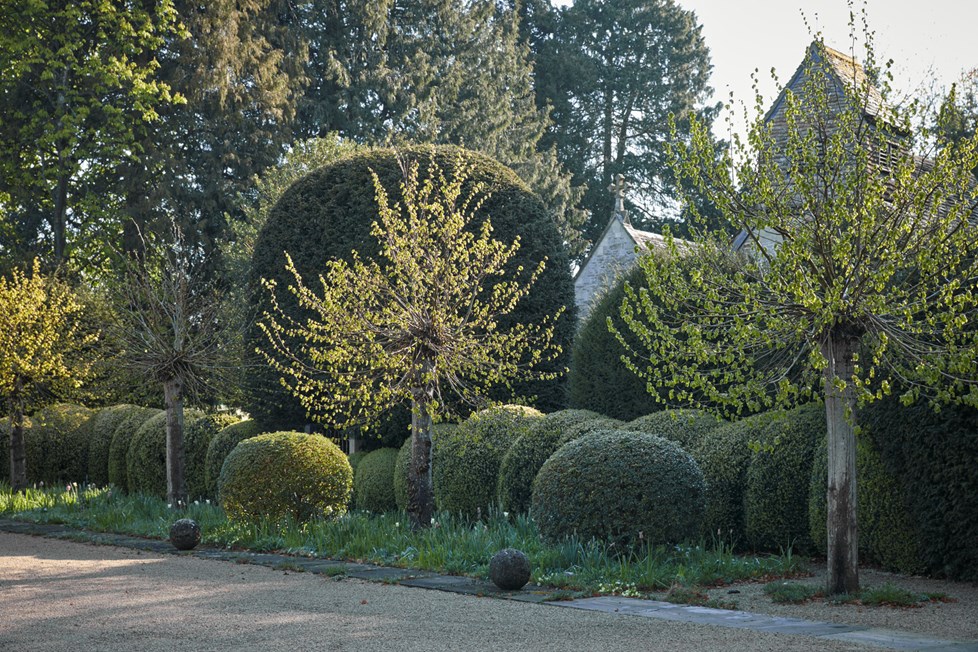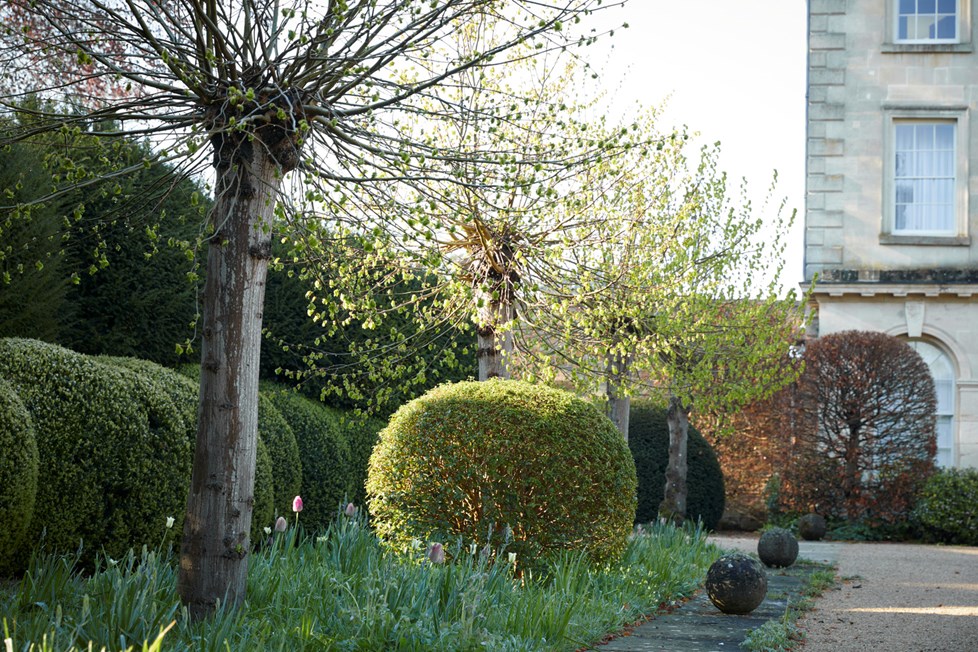Before we made the garden, this beautiful Georgian house had an air of grand solemnity and detachment from its parkland setting. We brought long meadow grass, studded with tulips, right up to the house, and framed vistas out to the park with deciduous hornbeam topiary. This softened the approach and re-established a connection to the setting, dressing down the formality of the house with the looseness of the planting. At the centre, a copper beech platform creates a wonderful contrast to the green on green of the pollarded lime trees held in by big loose box hedges, which have the effect of dissolving the garden back into the Georgian landscape. An abandoned walled garden had been turned into a tennis court, and complete walls were missing. We re-built the walls and reconfigured the garden, putting in traditional gates to make a wonderful enclosed space once more. The walled garden now houses a productive mixture of vegetables and flowers, many of which are grown from seed in the Foster and Pearson glasshouse, built faithfully to an original Victorian design. The banks of cold frames provide shelter for young plants to grow on. Along with the glasshouse they enable this garden to function in the traditional way, allowing for tender plants to be overwintered, and rare plants to be propagated and multiplied. The ‘Pasque flower’, Pulsatilla vulgaris are planted in the chippings beneath the box topiary, and are wonderful both in flower and in seed - when they catch the spring sunlight in a magical way.
Our client has gone on to specialise in tulips, forming the national collection of tulipa (historic tulips) with Plant Heritage and also runs the wonderful artisan flower growing and floristry business Bayntun Flowers.
